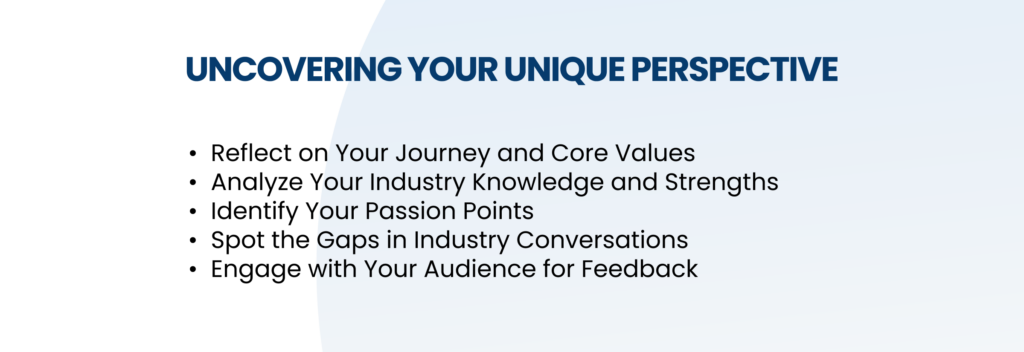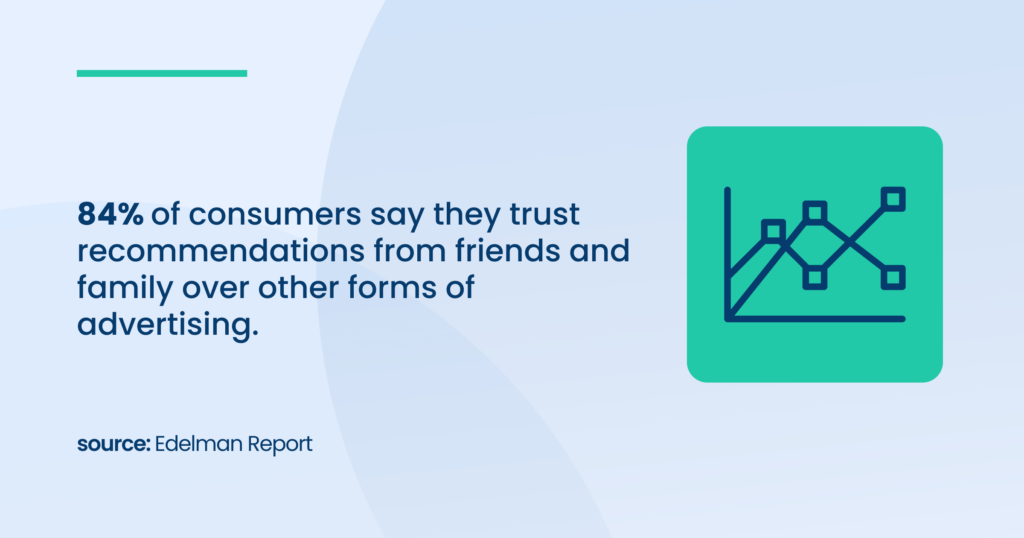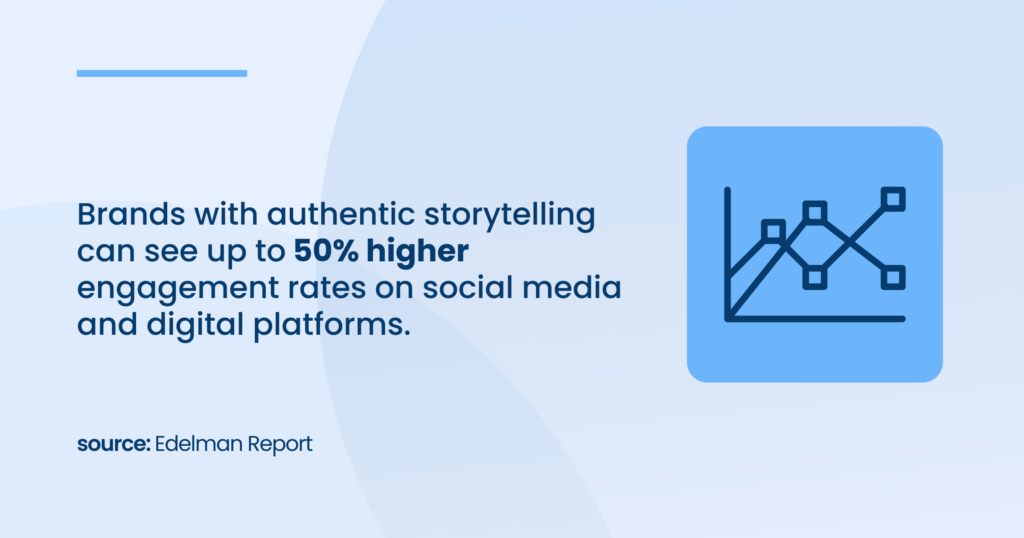Did you know that 60% of buyers say thought leadership builds credibility when entering a new category where the brand is unknown?
The numbers don’t lie—a strong brand positioning strategy can be the difference between fading into obscurity and becoming a household name.

Source: Bright Tail
In today’s crowded marketplace, credibility isn’t just an advantage; it’s essential.
Thought leadership gives CEOs and business owners a unique platform to educate, engage, and inspire their audience.
Indeed, an expert Thought Leadership Agency will be the strategic partner in this journey, helping your brand transform insights and expertise into powerful content.
Let’s explore how to achieve Thought Leadership Best Practices to Inspire, Engage, and Influence.
Where’s Your Voice? Uncovering Your Unique Perspective
In the crowded world of thought leadership, your unique voice is the secret ingredient that differentiates you from everyone else. For CEOs and business owners, your perspective and insights are not just opinions—they’re valuable assets. But how do you uncover and define this unique perspective to create a powerful thought leadership presence?

From Broad to Bold: Narrowing Your Focus for Maximum Impact
For CEOs and business owners looking to establish thought leadership, focusing on a broad range of topics is tempting but often counterproductive.
True influence lies in specificity.
By choosing a niche focus, you not only make your content more valuable to your audience but also position yourself as a leader in a distinct area.
- Why Niche Focus is Essential for Thought Leadership
Broad topics may cast a wide net, but they’re less likely to attract a deeply engaged audience. When you narrow down your area of focus, you target a specific group with targeted needs, making your message more memorable and impactful.
Consider digital PR strategies in your industry: Instead of discussing “effective marketing,” focus on “digital PR strategies for startups” or “types of thought leadership content for digital-first brands.” This clarity of focus strengthens your brand positioning and makes your thought leadership content valuable to those looking for specialized insights.
- Defining Your Niche Through Strategic Brand Positioning
Think about what your brand or company stands for. What unique role do you play within your industry? For example, if your company focuses on eco-friendly technology, narrow down your thought leadership to topics like “sustainable technology for urban environments” or “innovation in renewable energy solutions.”
This targeted approach to brand positioning not only sets you apart but also attracts an audience aligned with your mission and values.
- Align with Market Trends and Audience Needs
To be effective, your niche should align with both market trends and audience needs. Identify trends in your industry that are growing but underrepresented in mainstream discussions.
For instance, AI and machine learning might be hot topics across industries, but focusing on AI in small business automation could create a unique niche that appeals to your audience. When your content speaks to emerging trends, you not only address your audience’s current interests but also position yourself as a leader in the future of your industry.
- Build Content Depth for Stronger Influence
When you narrow your focus, you create room to go deeper into your chosen topic. This approach allows you to produce content that is not only informative but also comprehensive, increasing its value.
For example, instead of general content on “leadership,” delve into “strategic brand positioning for CEOs” or “how business owners can leverage thought leadership to build trust.” This depth gives you credibility, and the more detailed your content, the more likely it is to be shared, referenced, and remembered.
- Create Content Categories to Keep Your Audience Engaged
A narrower focus enables you to develop content categories within your niche, which keeps your audience engaged and invested in your brand. If your thought leadership centers on “digital PR strategies,” you might create sub-categories like “digital PR and thought leadership best practices,” “emerging trends in digital PR,” and “case studies in digital PR success.”
This organization helps your audience follow along and builds a sense of continuity, encouraging return visits and deeper engagement.
Telling Stories That Resonate: The Power of Authenticity
In today’s fast-paced digital world, where businesses compete for every second of attention, authenticity has become the most valuable currency.
Thought leadership isn’t just about sharing insights; it’s about making connections that stick.
Source: Bright Tail
CEOs and business owners who lead with authentic stories create stronger, more meaningful relationships with their audience. But why does authenticity work so well, and how can it be leveraged effectively?
Forget the Pitch: Why Authentic Stories Work Better Than Sales
Too often, businesses try to engage audiences with polished pitches and scripted marketing messages.
The problem? Audiences can sense a sales pitch from miles away. Genuine stories, however, break through that noise by offering real, relatable experiences.
- Building Trust with Real Connections
Authentic storytelling works because it taps into this level of trust. When CEOs and business leaders share genuine experiences, it feels more like advice from a trusted friend than a calculated pitch.

Audiences are far more likely to engage with stories that feel honest and personal.
- Creating a Relatable Brand Identity
When businesses put forward a carefully crafted narrative, the story can feel distant or even untrustworthy. However, an authentic story brings a brand down to earth.
Sharing the challenges, failures, and lessons learned along the way creates a sense of shared experience that audiences find relatable.
For instance, Patagonia, known for its sustainable practices, doesn’t shy away from discussing its own environmental impact and the challenges it faces in reducing it. This openness makes Patagonia’s brand mission feel real and grounded, and it reinforces the brand’s commitment to its values.
- Transforming Content from Transactional to Transformational
Authentic storytelling isn’t about what the company can get from the audience but about how the story can provide value to them. It’s about going beyond the surface and creating content that resonates on an emotional level.
When stories aim to inspire or provide valuable lessons rather than simply sell, they connect more deeply.

Lessons from the Front Line: Sharing Real Experiences
For CEOs and business owners, leading with authenticity means showing up as real people—not just industry experts.
Sharing personal stories and business challenges not only makes leaders relatable but also positions them as thought leaders with real, valuable experiences.
How to Identify Stories That Resonate
Start by reflecting on key experiences that have shaped you and your business. Think about:
- Pivotal moments or challenges in your business journey.
- Lessons learned from failures or setbacks.
- Decisions that led to surprising outcomes or growth.
When selecting stories, remember that audiences connect with content that feels real and unfiltered. They want to see leaders who have faced struggles and come out stronger on the other side.
Tips for Crafting Authentic Stories
- Be Honest and Vulnerable: Vulnerability creates a sense of authenticity. Don’t just share your successes—share the struggles, the mistakes, and the lessons learned. People are more likely to trust and respect leaders who are willing to show their humanity.
- Keep it Simple and Relatable: Avoid overloading your story with jargon or industry-specific terms. Keep your language simple and relatable. A clear, straightforward story is easier to connect with than one that sounds overly rehearsed.
- Incorporate Universal Themes: Success, failure, perseverance, innovation—these themes resonate because they are universally understood. When your story taps into these broader themes, it becomes easier for audiences to see themselves in your experiences.
The Science of Storytelling: Why Authenticity Works
Understanding why authentic stories work adds to the power of your message.
Neuroscience research shows that storytelling can increase oxytocin levels in the brain, a hormone linked to empathy and trust. When audiences read or hear a genuine story, they’re more likely to feel connected to the storyteller, making them more receptive to the message.
- Stories Influence Decision-Making
Authentic stories can influence audiences’ decisions, from purchasing choices to brand loyalty. A Harvard Business Review study found that 64% of consumers who said they had a relationship with a brand attributed it to shared values.
Stories are a direct way to showcase those values in action, creating a pathway to long-term loyalty.
- Authentic Stories Boost SEO and Brand Authority
Thought leadership and SEO go hand in hand when stories are compelling enough to attract shares, links, and engagement.
Authentic content that resonates with audiences often has higher engagement rates, which signals search engines to boost your content’s visibility. In other words, when you share stories that people want to read and share, you’re not only building trust—you’re also building brand authority online.
Content That Speaks: Crafting High-Impact, Audience-Centric Content
In today’s information-rich environment, businesses that focus on creating meaningful, audience-centered content are the ones that break through the noise and create lasting connections.
For CEOs and business owners, this isn’t about simply sharing what’s on their mind. It’s about connecting insights to impact and crafting content that answers the real questions, needs, and interests of their audience.
From Insight to Influence: Creating Content That Matters
Creating content that resonates goes beyond sharing expertise. It’s about offering insights that speak directly to your audience’s challenges, goals, and ambitions.
Understand Your Audience’s Pain Points and Aspirations
To truly connect with your audience, start by asking what they care about. What are their biggest challenges? What goals do they strive to achieve? CEOs who address these needs create content that doesn’t just inform—it influences.
According to the study, 96% of B2B buyers look for content that speaks directly to their pain points. Think of this as a guidebook; when your audience sees that you’re addressing their real-world concerns, they’re far more likely to engage and keep coming back.
Choosing the Right Types of Thought Leadership Content
Every audience has a preferred way to consume content.
By experimenting with multiple content formats, you increase the likelihood of reaching and engaging your audience. Here are some effective types of content for building thought leadership:
- Blog Posts: Blog posts are ideal for diving into detailed topics and offering valuable insights. Blogs also improve thought leadership and SEO, helping you reach a broader audience organically.
- Podcasts: These are perfect for busy audiences who prefer consuming content on the go. Podcasts also provide a conversational format where CEOs can discuss trends, provide insights, or interview industry experts.
- Video Content: Video is a powerful format that combines visual and auditory elements, making complex ideas easier to digest. Short videos can introduce ideas, while longer formats allow for in-depth discussions.
Why Thought Leadership Best Practices Emphasize Relevance and Timeliness
Thought leadership best practices and strategies that prioritize relevance ensure that you’re addressing topics that matter to your audience right now. For example, if you’re in the tech industry, consider focusing on the latest innovations or challenges like AI and cybersecurity.
When CEOs stay current with trends and align content with audience interests, they not only build credibility but also increase their influence. Harvard Business Review notes that thought leaders who address timely issues tend to achieve higher levels of engagement.
Bringing It All Together: Thought Leadership Best Practices
When done right, thought leadership and SEO go hand in hand, as search engines reward content that engages users and keeps them coming back.
High-impact, audience-centric content is designed to not only attract attention but to build trust, foster loyalty, and establish your brand as a go-to resource.
- Know Your Audience: Always start by understanding their pain points and needs.
- Choose the Right Content Types: Blogs, podcasts, and videos each offer unique ways to connect with your audience.
- Make It Actionable: Go beyond theory to share practical advice and solutions.
- Back It Up with Data: Use statistics and examples to reinforce your credibility.
- Stay Relatable and Inspiring: Position yourself as a mentor, not just an expert.
Choosing the Right Platforms to Expand Your Reach
In today’s digital world, simply sharing thought leadership on LinkedIn isn’t enough.
For CEOs aiming to build a robust, credible brand, it’s essential to look beyond conventional platforms and expand your influence across a diverse range of channels.
Beyond LinkedIn: Are You Reaching Your Audience Where They Are?
LinkedIn is a powerful space for establishing thought leadership, but it isn’t the only destination for meaningful engagement. Imagine you’re a CEO in the technology sector.
Sharing your insights on LinkedIn will connect you with a wide audience, but industry publications or niche tech forums might connect you with experts, decision-makers, and influencers who shape your industry.
Platforms like Medium, Substack, or industry-specific magazines, for instance, can bring your expertise directly to the people who most need it.
Source: Annual revenue generated by LinkedIn from fiscal year 2017 to 2024, Statista
For executives in the consumer goods or lifestyle sectors, diversifying into visual-heavy social networks such as Instagram or Pinterest might serve you better.
Here, you can share brand storytelling techniques that showcase your products and their impact on customer lives.
If you’re in finance or law, authoritative publications like Forbes, Harvard Business Review, or niche financial blogs could amplify your voice to a more engaged, highly relevant audience.
Remember, the goal isn’t just to reach more people; it’s to reach the right people in spaces they naturally engage with.
How to Balance Owned vs. Earned Media
To create a truly effective thought leadership strategy, you’ll need to leverage both owned and earned media.
While these terms may sound technical, they each play a unique role in amplifying your voice and building brand authority.
Owned media refers to channels that you fully control, like your company’s website, blog, or email newsletters. These platforms give you complete freedom to share insights, stories, and experiences in a way that’s fully aligned with your brand’s vision.
When you post on your own blog, you can control everything from the tone to the design, ensuring that the message is fully consistent with your strategic brand positioning.
Owned media is invaluable because it serves as a home base for your thought leadership. It’s where you can showcase a portfolio of content that reinforces why thought leadership is important to your brand.
Building Bridges to Business Growth
Thought leadership isn’t just a way to stand out—it’s a powerful tool to build trust, foster influence, and inspire lasting connections.
When done well, thought leadership goes beyond personal branding.
[A] Growth Agency is there for you.
Our team understands that true thought leadership is about contributing value, creating a legacy, and making a difference.
We specialize in creating growth strategies tailored to your goals, ensuring that every message is meaningful and every interaction builds trust.
Excellence is our standard. We believe in the power of data to inform and drive every strategy, ensuring our actions are as effective as they are innovative. If you are on our side, let’s get started together.

